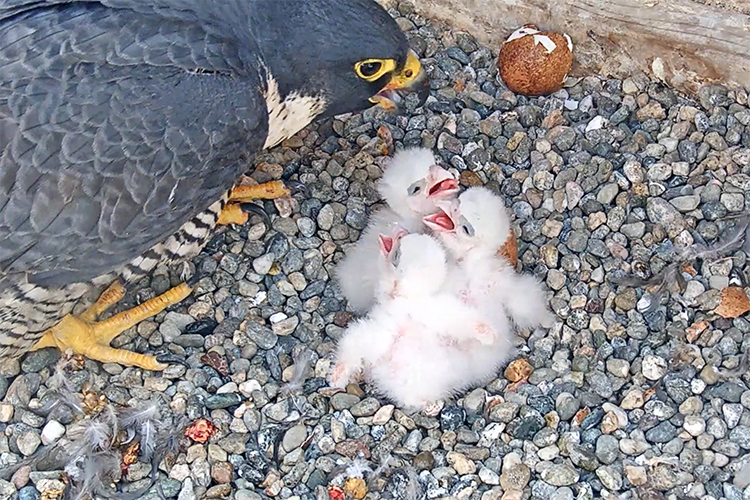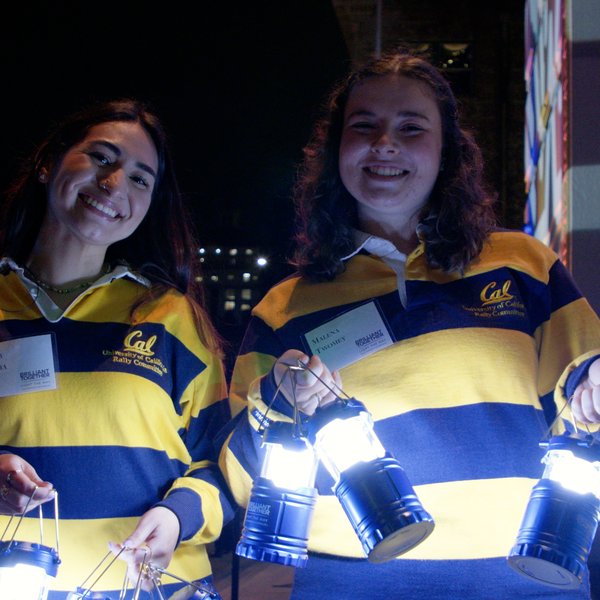
Annie with her three chicks born in April 2021. Photo courtesy of Cal Falcons.
More than just an ivory tower, the Campanile is also a trusty landmark, a treasure trove of history, a music box, and a guardian of our beautiful campus. Most of all, it is a symbol of Berkeley’s lofty vision and enduring contribution to California and the world.
Housed on its five floors — unbeknownst to many — are some 20 tons of ancient fossils, most of which were excavated by UC paleontologists in the early 1900s from tar pits in prehistoric Los Angeles. Our collection includes, among many animals, the remains of saber-toothed cats, horses, camels, ground sloths, and vultures, which fed on animals caught in the tar. The dire wolf and Smilodon are the most common species found among the 300,000 specimens.
Fossils are not the only residents. Annie and Grinnell, a peregrine falcon pair, have been nesting atop the tower since 2017, successfully hatching a brood of chicks each spring. The world’s fastest birds, peregrines were almost completely wiped out from the western United States because of DDT, a pesticide now known to damage the environment, wildlife, and human health. Since DDT was banned in the 1970s, peregrine populations have begun to bounce back, opening up possibilities for research, including among our own faculty, students, and Cal Falcons fans.




